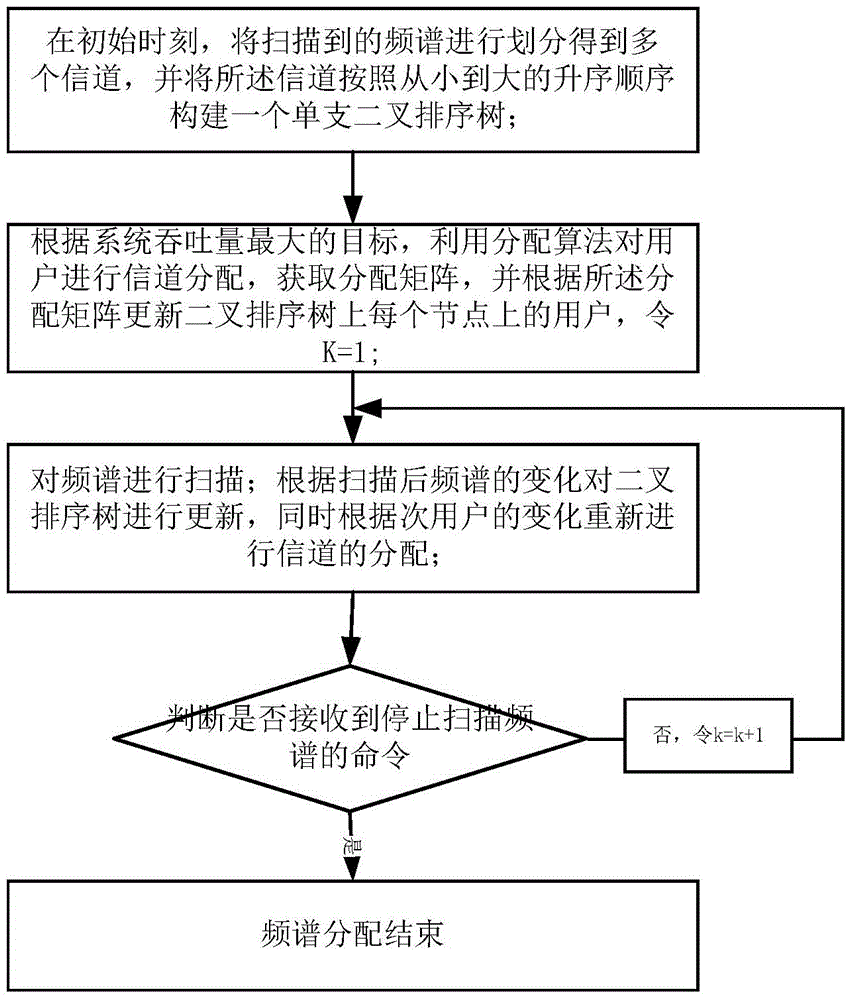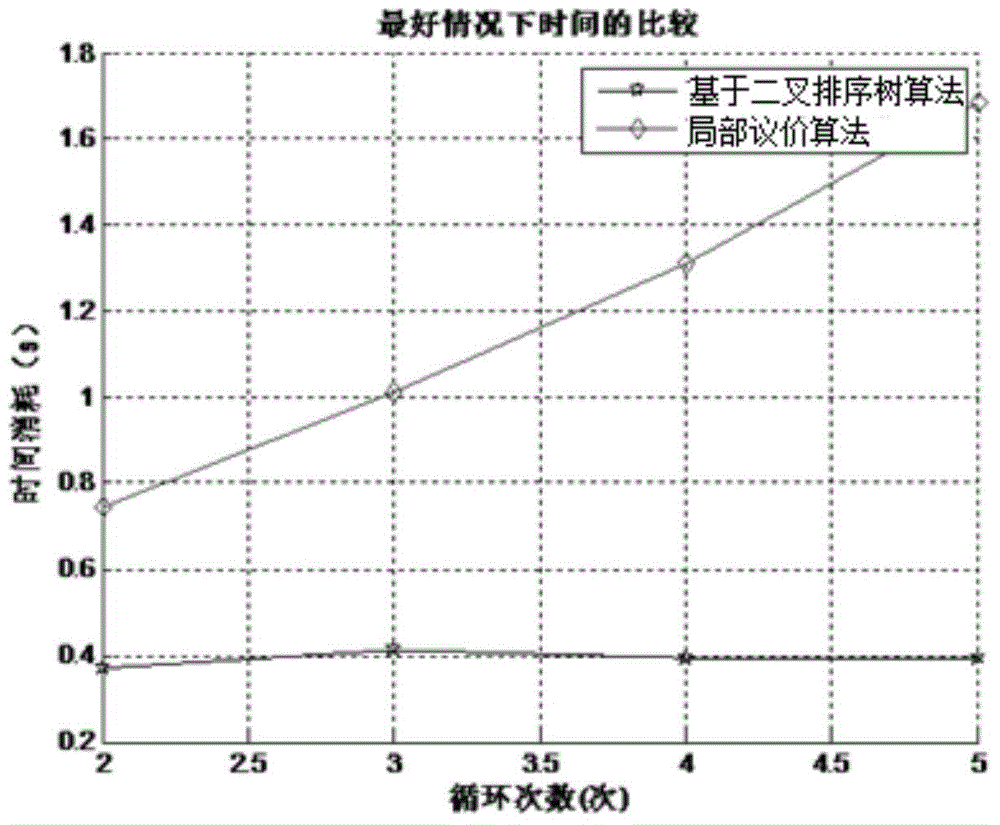Binary sort tree-based local-bargaining spectrum allocation method
A binary sorting tree and spectrum allocation technology, applied in the field of cognitive radio, can solve problems such as unreasonable allocation, no consideration, long allocation time, etc., and achieve the effect of saving allocation time
- Summary
- Abstract
- Description
- Claims
- Application Information
AI Technical Summary
Problems solved by technology
Method used
Image
Examples
Embodiment Construction
[0048] In the traditional local bargaining spectrum allocation method, if the perceived spectrum allocation information is in the form of a graph, it needs to be converted into a binary available channel matrix. This method will undoubtedly consume additional allocation time. If it can be directly used It is more time-efficient to assign perceptual graphs.
[0049] The method of the present invention is researched under the situation that the searched frequency band is expressed in the form of a binary sorting tree. Each node in the binary tree represents a channel. Associated with each node is a set of users able to use the channel. When an allocation is completed, the allocation result will be reflected in the binary sorting tree. When the entire frequency band is searched again and the master user reclaims the application for occupying the authorized channel, the binary sorting tree will insert the node represented by the corresponding frequency band. Similarly, when the...
PUM
 Login to View More
Login to View More Abstract
Description
Claims
Application Information
 Login to View More
Login to View More - R&D
- Intellectual Property
- Life Sciences
- Materials
- Tech Scout
- Unparalleled Data Quality
- Higher Quality Content
- 60% Fewer Hallucinations
Browse by: Latest US Patents, China's latest patents, Technical Efficacy Thesaurus, Application Domain, Technology Topic, Popular Technical Reports.
© 2025 PatSnap. All rights reserved.Legal|Privacy policy|Modern Slavery Act Transparency Statement|Sitemap|About US| Contact US: help@patsnap.com



